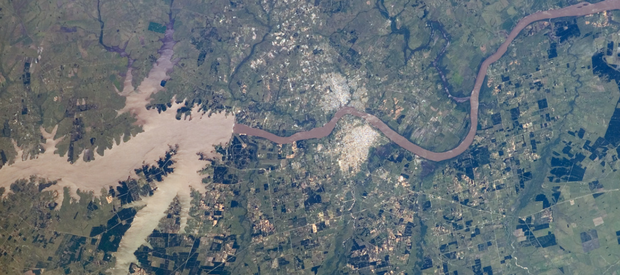Argentina: Entre Rios
Art. 1 - The province of Entre Ríos is hereby declared free from new works of damming on the Paraná and Uruguay rivers, in accordance with the powers set forth in articles 1, 5, 41 and 124 of the National Constitution.
Art. 2. - Goods of nature and natural resources of special interest for their care, conservation and sustainable use, are declared to the rivers Paraná, Uruguay and other water courses of the Province of Entre Ríos, in particular as regards the quality of water, quantity, distribution and hierarchical use, as well as the sustenance of biodiversity.
When the Salto Grande Dam on the Uruguay River flooded the city of Federación in the province of Entre Ríos, Argentina in 1974, it created an uproar among residents who were forced to relocate their homes and businesses. The experience planted the seeds for a mass movement to protect the region’s rivers.
The road from drowning a heritage city to permanently protecting the region’s rivers was a long and arduous one, however. In 1996, Argentina’s then-President Carlos Menem initiated studies to dam the middle section of the Paraná River, located in the Entre Rios province of Argentina.
The Paraná is the second-longest river in South America, and it flows from Brazil through Paraguay, Uruguay and Argentina. Its extensive wetlands had suffered since the construction of two dams, Itaipu and Yacyreta, in its upper reaches. When another dam threatened the middle stretch of the river, advocates for the river formed la Asociación de Entidades Ambientalistas de la Cuenca del Plata (AEA), which sought to slow the project. They brought a series of lawsuits that successfully halted the project.
In 1997, after nearly two years of an unprecedented social mobilization that brought teachers and trade unions into the struggle, the province approved an anti-dam law that declared the freedom of the Paraná and Uruguay rivers (Law no. 9.092). (The law was extended to include the Gualeguay River some years later.) September 25 was even declared “River Freedom Day.”
In 2008, when Entre Rios province was rewriting its constitution, it enshrined the law in Article 85 of the new document. The constitution now calls for the sustainable and concerted management of common water basins with other provinces and "... wetland systems, which are declared free of construction of large-scale infrastructure works that may interrupt or degrade the freedom of their waters and the natural development of their associated ecosystems."
It has been a magnificent win for river defenders, and has permanently protected two important rivers in Argentina.
Read the full text of Article 85.
Thanks to Jorge Daneri, Lawyer, Fundación M'Biguá, Citizenship and Environmental Justice, for contributing to this piece.
Photo: The reservoir formed by Salto Grande Dam on the Uruguay River in Argentina. Photo courtesy of Tano4595 via Wikimedia Commons.



